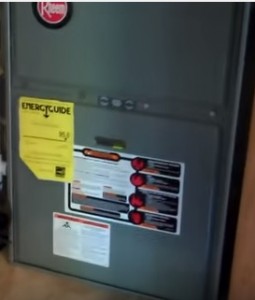
Furnaces have been in a constant evolution to become more efficient and last longer.
During this constant change manufactures have continued to rethink the way furnaces work, from lighting gas with a pilot light, to using an eclectic igniter.
Even though furnaces have changed over the years many older units are still in service and continue to work well.
These old units continue to heating homes as they were built to do and simply need some simple maintenance to keep working.
- Forced Air Furnace
- Efficiency Ratings
- Furnace AFUE Rating
The words “Forced Air Furnace” are used a lot in heating and cooling. But what does it mean? A Forced Air Furnace is a system that has a heating source such as gas or electric and has a fan attached to the system that blows air into a home.
A system that uses radiators to heat a home would not be a forced air unit since there is no fan attached to it.
Forced air systems are by far the most commonly used furnace to heat homes.
Efficiency ratings is another term used when it comes to furnaces. Manufactures through the years have made furnaces more and more efficient saving home owners money.
Heat that was once wasted away through a vent pipe is now recycled back through a system saving energy that would otherwise be wasted.
AFUE (Annual Fuel Utilization Efficiency) is a terminology used to rate how efficient a furnace is at heating a home.
Older furnaces used more energy to heat a home than newer ones. Older furnaces for example simply vented out much of the heat generated through the flue pipe.
New 95 percent furnaces can use the heat wasted through the vent pipe to help heat a home and save energy cost.
Low Efficiency Furnace: 55% to 72% AFUE (Obsolete technology)
Low Efficiency Furnace: 78% AFUE (Minimum AFUE allowed for new furnaces)
Standard / Mid Efficiency Gas Furnace: 80% to 83% AFUE
Summary
While most homes use gas furnaces there are also other types of ways to heat a home, such as Heat Pumps and Oil Furnaces.
If you find your self in need of a new gas furnace be sure to get at least a 80 percent furnace and higher if possible.
The higher the rating the higher the cost so often many people will go with a 80 percent furnace instead of a more efficient 95 percent furnace.